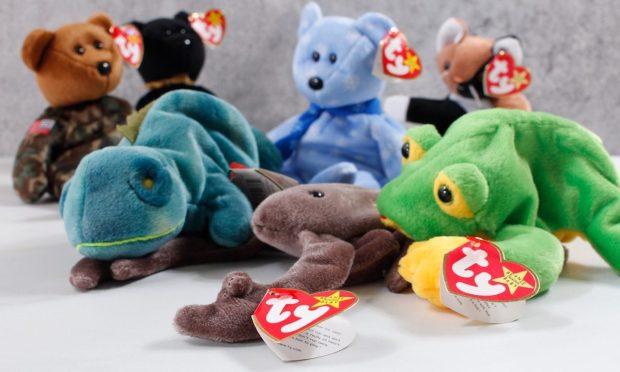From Beanie Babies to Beeple, Are NFTs Just Another Fad?

Although some reports trace their origins back five or even 10 years, the actual non-fungible token, or NFT, craze is really a “2021 thing” meaning the explosive growth in prices and players and the general availability of these digital assets is less than a year old.
It’s almost hard to believe, given that NFT news is everywhere today, with each subsequent story seeming to outdo the last, by pushing the boundaries on price, testing the limits of human comprehension for their abstraction and absurdity, or simply turning the ordinary into, well, something that might become extremely valuable — or not.
In short, the vast and ever-growing universe of NFTs is an imbalanced sea of images, populated by a handful of attention-grabbing, multi-million-dollar pieces of imagery on one end, versus an ocean of digital dreck, not unlike a bloated cellphone photo gallery, on the other.
Take the latest news from the Buffalo Bills on Tuesday: With the blessing of the NFL and managed by Ticketmaster, the team will offer fans who attend the upcoming Monday night game against the New England Patriots a chance to immortalize their regular old ticket stub by purchasing a “virtual commemorative ticket” in the form of an NFT for $10.
While that offer seems harmless and reasonable enough, like most things NFT, there’s more to the story than just a football fan looking to latch onto a moment or create a keepsake. In this case, these ticket NFTs do not appear to be aimed at the casual collector, but rather at the digital prospector or entrepreneur. In much the same way that the lottery says “you can’t win if you don’t play,” the virtual commemorative ticket deal is aimed directly at the secondary market rather than some sort of heirloom to be passed on to your kids.
“Fans who purchase these [virtual commemorative tickets] will then be able to resell in the NFL Marketplace,” the Ticketmaster FAQ site explains. There are over two dozen different rules and regulations surrounding the buying, selling, gifting and social media sharing of these NFTs.
Whether the cryptocurrency crowd decides to single out Bills tickets as the next big thing in NFT Land or ignore them and value them in a way that is equivalent to photos of their Thanksgiving turkey remains to be seen, but the pricing and valuation process is as random as it is volatile. Contrary to conventional wisdom, just because something is labeled an NFT doesn’t mean it magically gains intrinsic value.
All NFTs Are Not Created Equal
To be sure, there are people making money on NFTs, by either making them or simply trading them. Elon Musk’s spouse and musician Grimes is one early adopter and advocate of the genre who appears to have padded her already immeasurable wealth via the verified digital image trade. The singularly named artist (perhaps there’s an investable theme there?) known as Beeple is another NFT outlier who burst onto the scene in March after selling his digital collage for $69 million.
See also: The ‘Next Chapter’ in Art History? Digital-Only Work Sells for Close to $70M
But for every Grimes, Beeple or CryptoPunk that has helped drive NFT transaction volume above $3.5 billion this year, there are tens of thousands of other assets sitting idly and ignored, with virtually no more value than birthday party photos.
Related news: NFT Marketplace OpenSea Sees $3.4B Transaction Volume in August
In much the same way that Beanie Babies exploded onto the scene and defied financial logic in the 1990s, or online auctions for second-hand sneakers affixed astronomical values to used shoes, the young and mysterious NFT market is enjoying a similar moment of irrational exuberance, which is really just another way of saying “bubble.”
